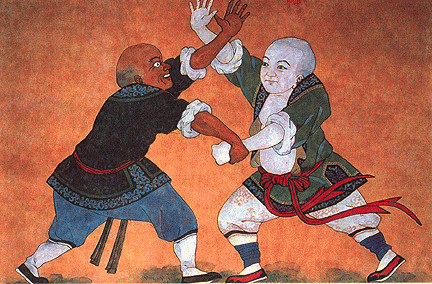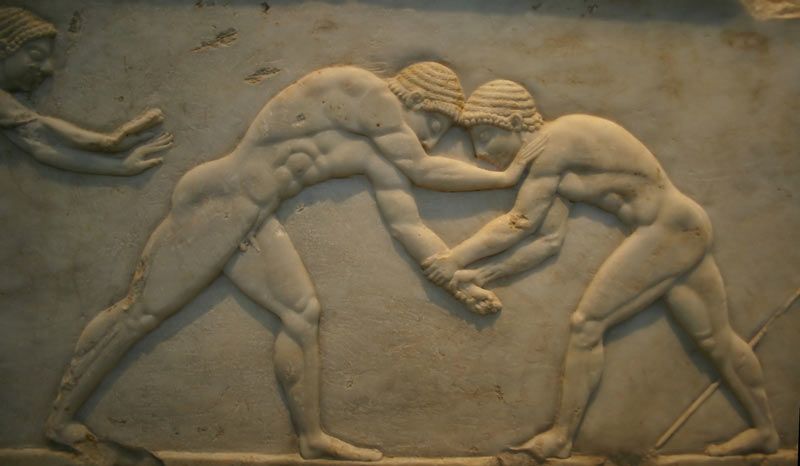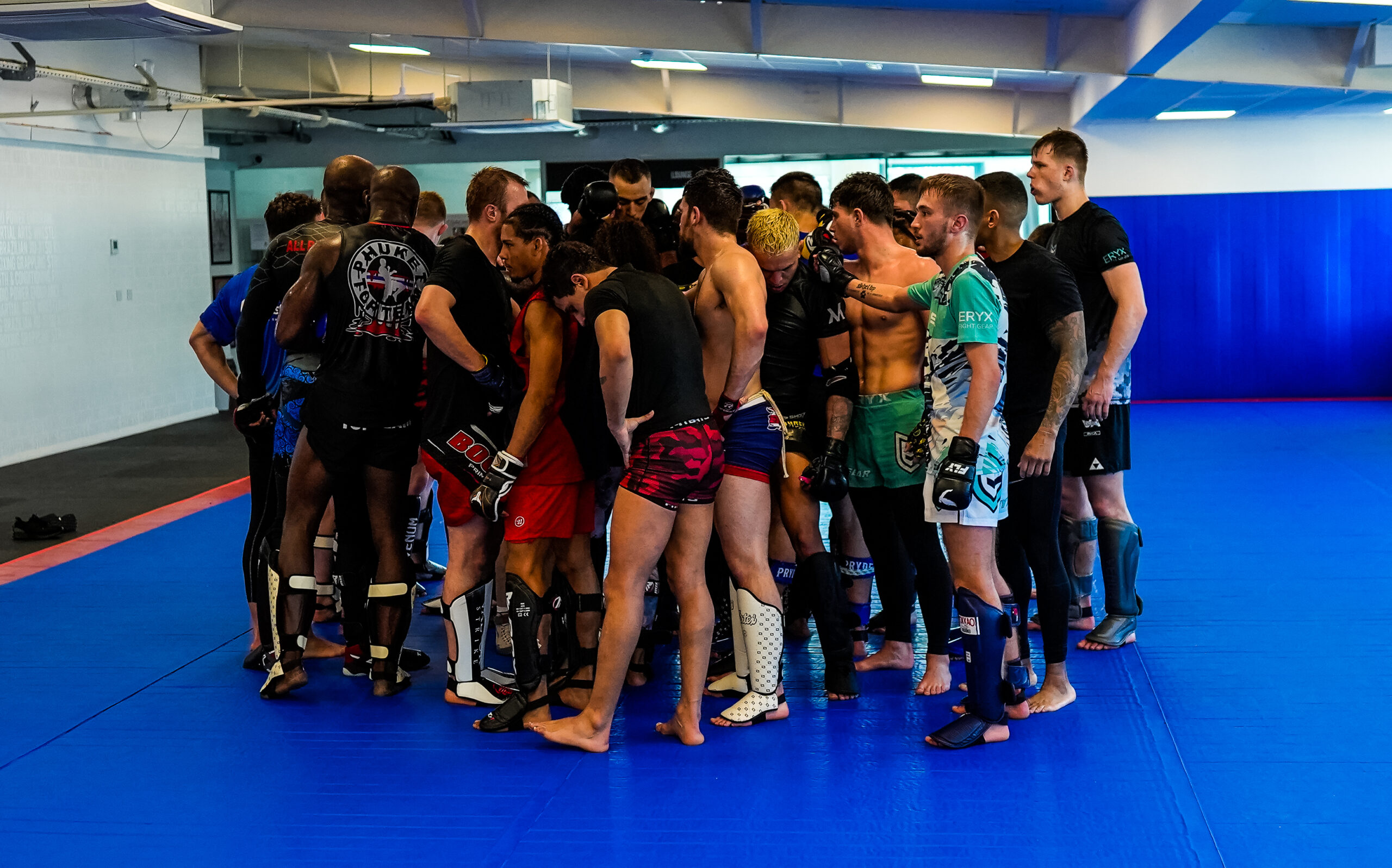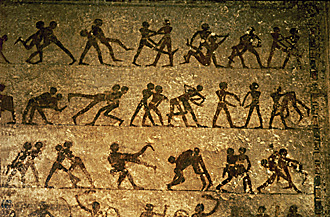Introduction
Martial arts, a term that encompasses a wide array of combat techniques, philosophies, and disciplines, have captured the interest and imagination of people for centuries. These ancient arts, which vary significantly in their origins, techniques, and philosophies, have been passed down through generations and continue to evolve today. This blog post delves into the rich history and origins of martial arts, providing a comprehensive understanding of these fascinating disciplines that have shaped human culture and history.

The Beginning: Ancient Martial Arts
The earliest evidence of martial arts can be traced back to prehistoric times. Cave paintings and archaeological findings indicate that early humans used combat skills and techniques for hunting, warfare, and self-defense. The development of martial arts as structured systems, however, began thousands of years later.
- Ancient Egypt (circa 3000 BCE)
Reliefs and murals in ancient Egyptian tombs depict wrestling and hand-to-hand combat techniques, which were likely used for military training and sport. These early martial arts focused on throws, joint locks, and strikes, demonstrating a level of sophistication and skill that laid the foundation for future developments.
- Ancient India (circa 1500 BCE)
Martial arts in ancient India were heavily influenced by the spiritual and philosophical teachings of the time. The foundational Indian martial art, Kalaripayattu, is believed to have originated in the southern state of Kerala around 1500 BCE. Kalaripayattu emphasizes flexibility, strength, and agility, with practitioners honing their skills in armed and unarmed combat, as well as yoga and meditation.
The Vedas, ancient Indian texts, also mention Dhanurveda, a term that refers to the martial knowledge and techniques of archery and warfare. Many of these teachings were later incorporated into Hindu and Buddhist practices.
- Ancient China (circa 500 BCE)
Chinese martial arts, often referred to as Kung Fu or Wushu, are deeply rooted in Chinese history, culture, and philosophy. The origins of Chinese martial arts are often attributed to the Xia and Shang dynasties (circa 2000–1000 BCE), but their development as structured systems began around the 5th century BCE.
The famous philosopher Confucius emphasized the importance of moral and ethical values in martial arts practice, while the Daoist philosophy promoted harmony with nature, balance, and inner peace. Many of these principles were later integrated into various Chinese martial arts styles.
The Shaolin Temple, established in the 5th century CE, became a center of martial arts development, integrating Buddhist teachings with martial arts practice. The monks of the Shaolin Temple created and refined many techniques, which later evolved into distinct styles like Shaolin Kung Fu and Tai Chi.
- Ancient Greece (circa 776 BCE)
The ancient Greeks highly valued physical fitness and combat skills. The Olympic Games, first held in 776 BCE, featured combat sports like wrestling, boxing, and pankration, a brutal blend of wrestling and boxing that allowed almost all techniques except biting and gouging. This early martial art focused on strength, stamina, and technique, with the ultimate goal of overpowering the opponent.

The Expansion of Martial Arts
As civilizations grew and interacted, martial arts spread and evolved, with various techniques and styles being shared, adapted, and refined.
- The Roman Empire (circa 27 BCE–476 CE)The Romans admired Greek combat sports and adopted them into their own culture. They modified Greek boxing and wrestling techniques to create new disciplines like gladiatorial combat and Roman Pancratium. These martial arts were often practiced by gladiators and soldiers for entertainment and military purposes.
- Japan (circa 8th century CE)
The martial arts of Japan, known as Bujutsu or Budo, emerged around the 8th century CE, influenced by Chinese martial arts and indigenous combat practices. Samurai warriors, who played a significant role in Japanese history, practiced various martial arts to enhance their combat skills and discipline. These arts included Kenjutsu (swordsmanship), Jujutsu (grappling), Kyudo (archery), and Naginatajutsu (polearm techniques).The rise of the samurai class and the subsequent feudal era led to the development of many martial arts schools and styles in Japan. During the Edo period (1603–1868), martial arts shifted from purely combat-oriented practices to disciplines focused on personal development, self-discipline, and spiritual growth. This transition gave birth to modern Japanese martial arts like Judo, Kendo, and Aikido.- Korea (circa 1st century CE)
Korean martial arts have a long and diverse history, with influences from Chinese and indigenous combat techniques. Early Korean martial arts included Taekkyeon, a kicking-focused art, and Subak, which involved hand strikes and grappling. During the Three Kingdoms period (57 BCE–668 CE), the Hwarang warriors practiced martial arts, horsemanship, and archery as part of their training.
The development of modern Korean martial arts, such as Taekwondo and Hapkido, began during the Japanese occupation of Korea (1910–1945). These martial arts styles emphasize high, fast kicks and fluid movement, combining traditional Korean techniques with influences from Japanese and Chinese martial arts.

Martial Arts in the Modern Era
The 19th and 20th centuries marked the widespread dissemination of martial arts worldwide, as globalization and cultural exchange facilitated the sharing of techniques, philosophies, and training methods.
- The Birth of Modern Martial Arts
During the late 19th and early 20th centuries, several traditional martial arts were modernized to emphasize physical fitness, sport, and personal development. For example, Jigoro Kano, the founder of Judo, distilled the techniques of traditional Jujutsu and focused on the principles of maximum efficiency and mutual welfare. Similarly, Gichin Funakoshi simplified and systematized Okinawan Karate, eventually founding Shotokan Karate.
- Martial Arts in the Western World
Martial arts gained popularity in the Western world during the 20th century, with soldiers, travelers, and immigrants introducing various disciplines to Europe and the Americas. Bruce Lee, a Hong Kong-American actor and martial artist, played a significant role in popularizing Chinese martial arts in the West through his films and teachings.
The introduction of martial arts to the West led to the development of hybrid styles that combined techniques from various disciplines, such as Kickboxing, Brazilian Jiu-Jitsu, and Krav Maga.
- Mixed Martial Arts (MMA)
MMA emerged as a modern combat sport in the late 20th century, combining techniques from various martial arts disciplines. The first Ultimate Fighting Championship (UFC) event, held in 1993, showcased fighters from different martial arts backgrounds competing against each other to determine the most effective techniques. This event sparked the evolution of MMA, which has since become a popular and highly competitive global sport.
Conclusion
The rich and diverse history of martial arts reflects the continuous evolution of human combat techniques, philosophies, and cultural influences. From their ancient origins in Egypt, India, China, and Greece to the modern combat sports of today, martial arts have shaped and been shaped by human history, transcending borders and time.
By understanding the origins and history of martial arts, we gain a deeper appreciation for these disciplines’ cultural significance

